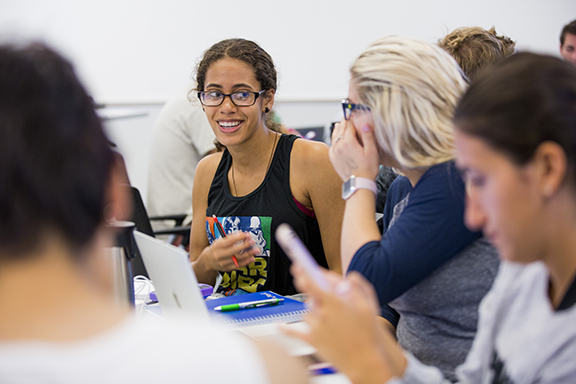Emory Institutional Statement on Diversity
In order for our campus and the Emory enterprise to anchor the work of diversity, equity, and inclusion in shared values and principles—in short, a common language—we will adopt the following diversity statement and glossary of terms as institutional guides for that work. These terms are foundational. You have the option to build on these founding principles to shape the work in your own schools and units.

The proposed glossary of terms was created, vetted, and shaped by the work of the Intercultural Education Advisory Group spring 2020.1 In our discussions, we realized that the important work of nationally recognized organizations such as the American Association of Colleges and Universities, the University of Southern California's Center for Urban Education, as well as the Association of American Universities should guide that work. We have adopted those definitions where relevant to align with national conversations and have credited that below. We have also expanded those definitions, where applicable, to more fully incorporate the Emory ethos. The diversity statement is taken from Emory's mission and statement of ethical principles. It was enhanced to strengthen its DEI values proposition.2
Institutional Statement on Diversity
The Emory community is open to all who have a commitment to the highest ideals of intellectual engagement, critical inquiry, and integrity. We welcome a diversity of gender identities, sexual orientations, abilities, and disabilities, as well as racial, ethnic, cultural, socioeconomic, religious, national, and international backgrounds, believing that the academic and social energy that results from such diversity is essential to advancing knowledge, addressing society’s most pressing issues, and attending to the full spectrum of human needs in service to the common good.
Diversity, Equity, and Inclusion Values and Principles
Diversity
Diversity is foundational to educational excellence and critical to a transformative academic experience. It helps to foster dynamic spaces of engagement where innovation, critical thinking, creativity, and understanding reside, and it helps to cultivate intellectual communities rooted in a mutual respect for individuals whose identities, experiences, gifts and talents mirror the communities that surround our campus, and better reflect the diversity of our world. Such efforts bind the value proposition of diversity to our institutional principles and ideals as we seek to create space for students, faculty, and staff to navigate an increasingly complex and diverse society, establishing models of practice that generate new knowledge and deeper human connections as we move from inclusive excellence to inclusive eminence. Thus, Diversity is understood broadly to mean race, ethnicity, gender, disability, national origin, age, health status, religion, veteran status, sexual orientation, gender identity, gender expression, socio-economic standing, immigration status, family background, neurodiversity, intersectional identities, and the broad representations of human existence.4
Inclusion
Inclusion in action is about creating an environment in which faculty, staff, and students can thrive, where they feel appreciated and can see themselves in the images, traditions, and culture of the campus community. Thus, Inclusion is the active, intentional, and ongoing engagement with the principles of diversity—in our scholarship, in our curriculum, co-curriculum, business operations and infrastructure of our institution. Inclusion is interwoven into the intellectual, social, cultural, geographical, local, regional, and institutional communities with which individuals might connect—in ways that increase awareness, content knowledge, perspective taking, and empathetic understanding of the complex ways individuals interact within societies, organizations, and institutions, and systems.5
Equity
Equity is the guarantee of fair treatment, access, opportunity, and advancement for all students, faculty, and staff, while at the same time striving to identify and eliminate barriers that have prevented the full participation of some groups. The guiding principle of equity acknowledges that there are underserved and underrepresented populations and that fairness regarding these unbalanced conditions is needed to assist in the provision of effective opportunities to all groups.6
Equity-Mindedness
Equity-mindedness calls attention to patterns of inequity in outcomes for students, faculty, and staff. Practitioners of equity-mindedness are willing to take personal and institutional responsibility for the success of their students, faculty, and staff, and critically reassess their own practices. It also requires that practitioners are race-conscious and aware of the social and historical context of exclusionary practices in American Higher Education.7
Sources
- 1Intercultural Development Advisory Group
- 2This document was presented to the Council of Deans and the Vice Provosts on September 16, 2020, and edited based on feedback. This document was presented to the Council of Associate Deans on September 24, 2020, and edited revised based on feedback. It was shared with the President's Office on October 30, 2020, and revised based on feedback.
- 3Faculty Handbook, Chapter 2: Vision, Mission, and Ethical Principles
- 4Association of American Colleges and Universities: Making Excellence Inclusive
- 5Ibid.
- 6Ibid.
- 7Ibid.